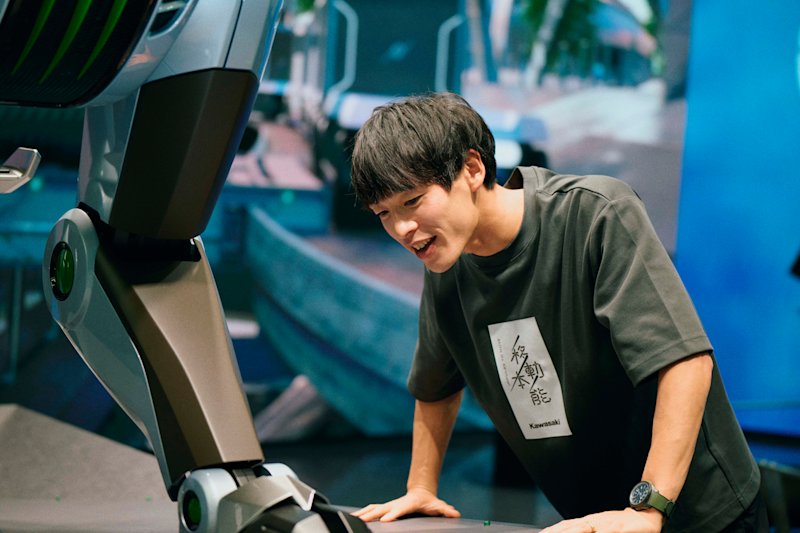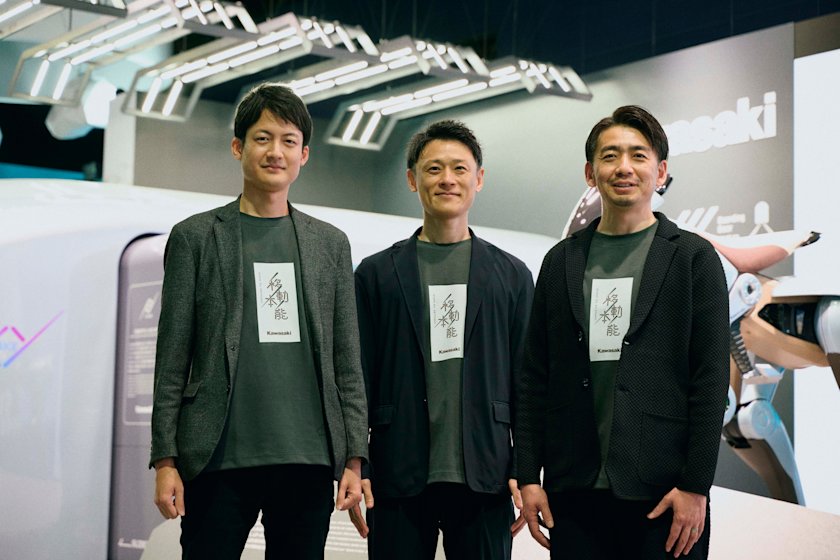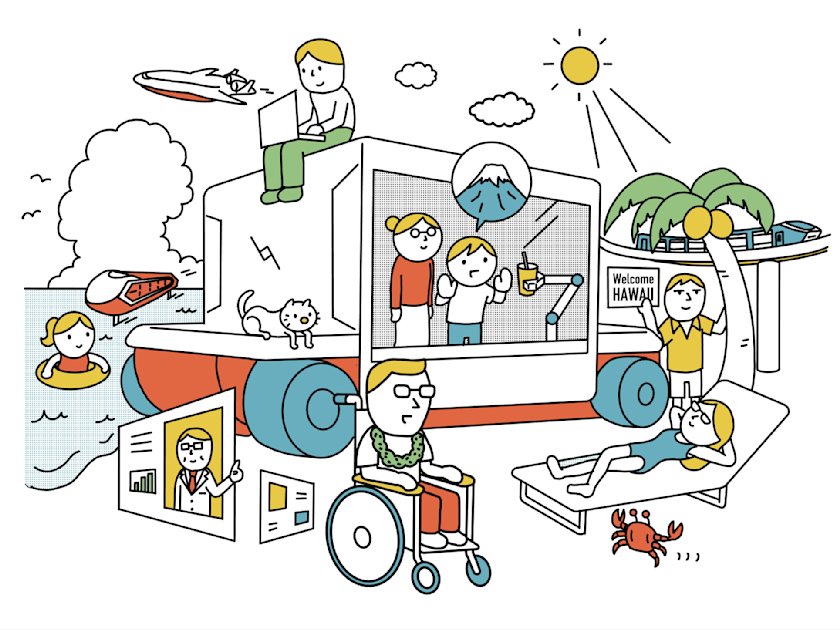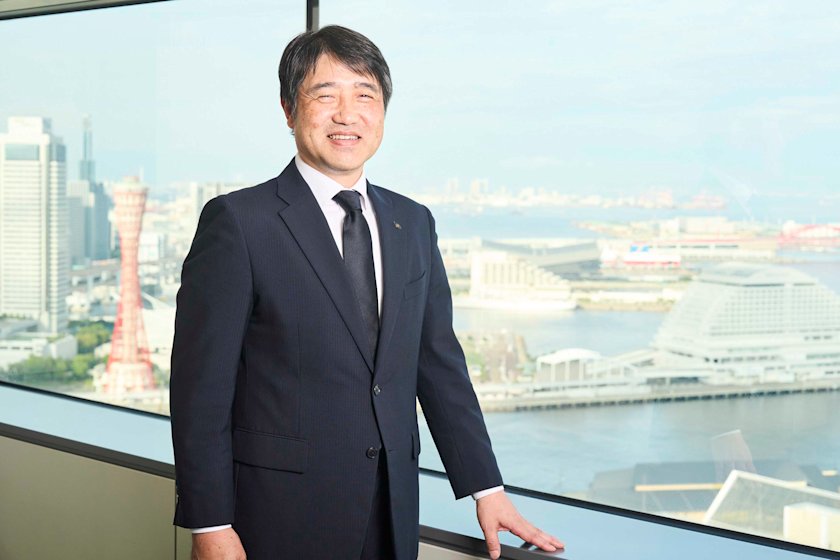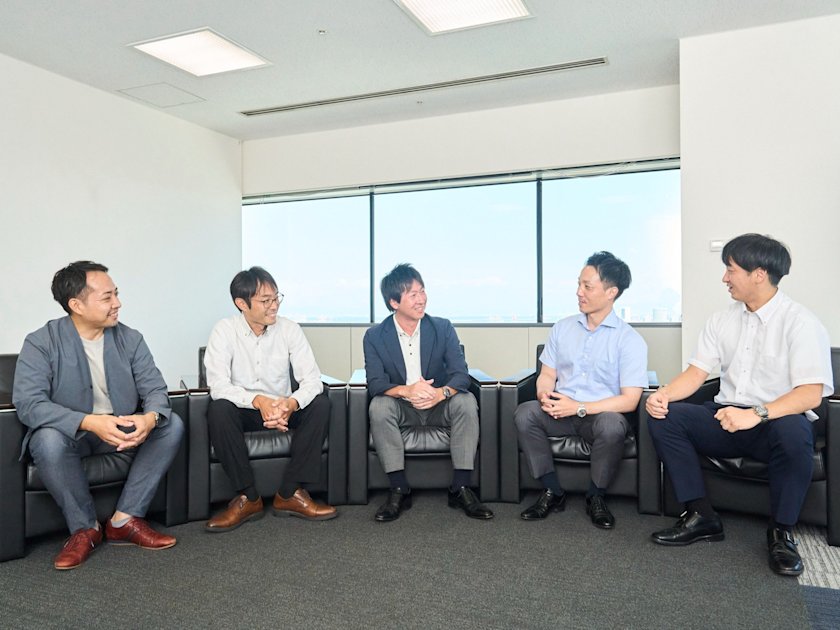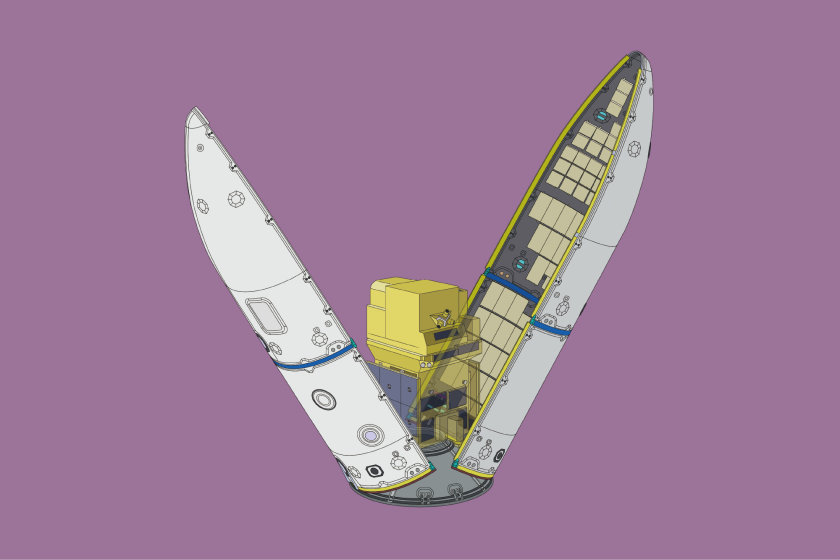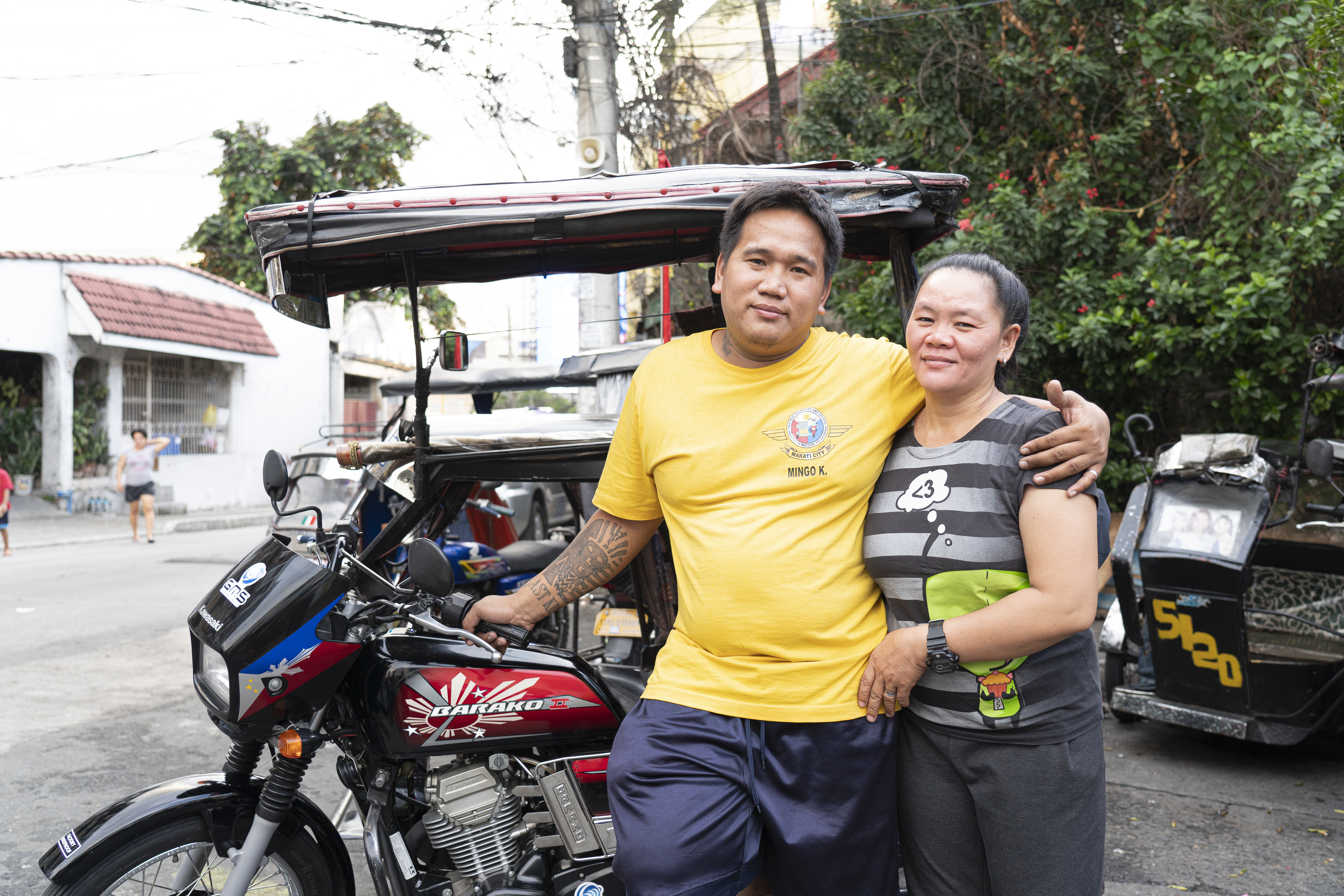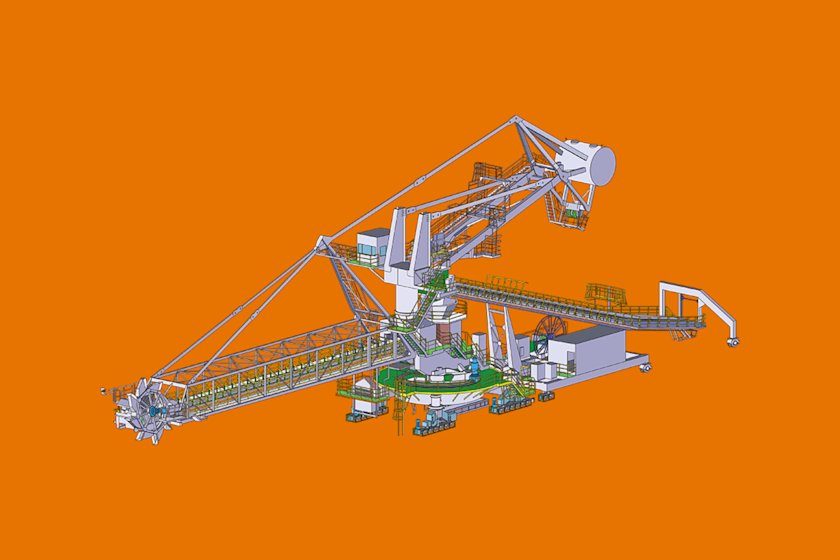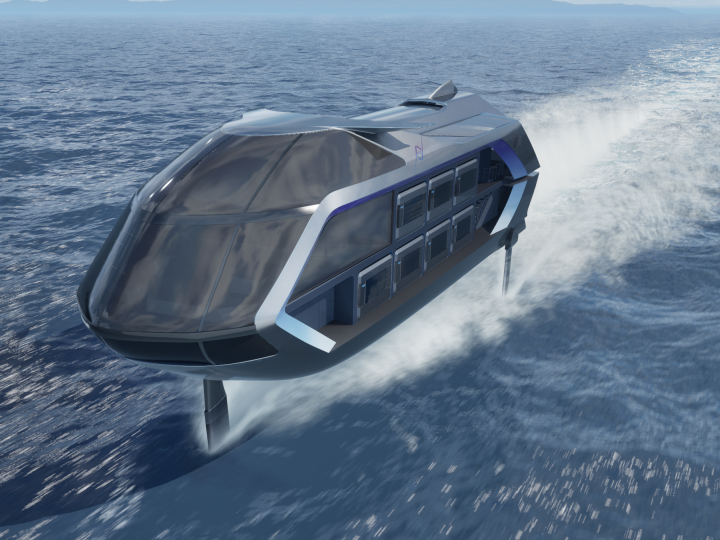Being predisposed to derive happiness from kinetic activity, humans desire to fulfill an “Impulse to Move.”
This term encapsulates the theme selected by the Kawasaki Group as an exhibitor at Expo 2025 Osaka, Kansai, Japan (Expo 2025). Under this theme, the Group will showcase two models of sustainable mobility: the off-road four-legged personal vehicle CORLEO and the innovative ALICE SYSTEM for public transportation. Life-sized examples of these personal and mass mobility solutions will be presented at an exhibition space dubbed “Impulse to Move Lab: Kawasaki Future World.”
Kawasaki has created these futuristic vehicle models by applying the latest robotics and hydrogen technologies while also drawing on its proven capacity to offer mobility solutions to the land, sea and air transportation sectors for more than 125 years. But how did it all come about? To answer this question, three representatives of the EXPO 2025 Osaka, Kansai, Japan Promotion Section shared the behind-the-scenes story.

Head of the EXPO 2025 Osaka, Kansai, Japan Promotion Section. Responsible for overall management of the section and negotiations with the Japan Association for the 2025 World Exposition and other organizations.

EXPO 2025 Osaka, Kansai, Japan Promotion Project Leader. Responsible for all exhibits, videos and other works created for the project.

Previously engaged in the design of railroad vehicles before taking the current position involved in the planning, marketing and sales of service robots. Also assigned to the EXPO 2025 Osaka, Kansai, Japan Promotion Section to take charge of the ALICE SYSTEM.
How can humans fulfill their “Impulse to Move”?—Key to Kawasaki’s future mobility vision
Having decided to participate in Expo 2025, held under the theme of designing the future society, Kawasaki began to think about what kind of vision of the future it should present. With this question in mind, a special team was formed in 2021, gathering mobility professionals like Inoue from across the different segments of land, sea and air transportation to discuss the possibilities of future mobility, with additional members, including Murakami, the overall manager of the exhibition project, and Amatatsu, joining later.

The Company began to think about participating in Expo 2025 at a time when people around the world had been experiencing the inconvenience of the behavioral restrictions imposed during the COVID-19 pandemic. Against this background, a decision was made to enter the “Transportation and Mobility” showcase category, and discussions began with an exploration of the possible key features of transportation apparatus able to support a sound future society.

Today, traveling even a relatively long distance is an ordinary activity for many people, unlike the hazardous venture it was during the Age of Exploration. Recently, it has even become possible to choose not to visit the target destination physically at all but to have a similar experience from home, and to do so for more and varied purposes. That said, many people continue to go on trips seeking thrills and enjoyment, and we seemingly never lose the desire to go traveling somewhere. We took notice of this apparently irrationally persistent and universal desire to move, began to look for explanations, and encountered the key term “impulse to move.” We also learned about the scientific theory stating that humans are predisposed to derive happiness from the act of moving.
While studying the term, we noticed the possibility of approaching the impulse to move, which is essentially never fully satisfied, by offering a completely new mode of transportation. That was how we began to consider plans to organize the exhibition with the theme of fulfilling the “Impulse to Move.”

Novel four-legged off-road vehicle―distinguished new embodiment of Kawasaki’s “Fun to Ride” philosophy
Exploring mobility solutions to fulfill the human impulse to move, the project team decided to pursue a two-track approach centering on systems for personal and mass transportation. After reviewing a host of suggested design candidates, including ideas for an amphibious train for mass transportation and a portable parachute for personal mobility, the team made their selection. One of their choices was eventually developed into CORLEO (CONCEPT 01), a novel means of mobility directed at motorcycle enthusiasts.

CORLEO could be described as something like a “high-mobility multilegged machine.” The highlight of its design lies in the adoption of legs. This was the answer to our quest to offer a novel ride experience, something that would be impossible if we had used wheels, as that kind of design has been too overdone to allow for any sense of novelty. Moreover, existing two-wheelers have strong off-road capabilities for getting air and powerfully traversing rugged mountains, but riders need to have high maneuvering skills and the risk of taking a tumble is almost unavoidable.
As a motorcycle manufacturer with a long track record, we looked at taking an unconventional approach to overcome such limitations of two-wheelers by removing their defining feature―the wheels―in order to expand the possibility for offering a “fun to ride” experience. And we considered employing legs instead, which could at least make the vehicle look more stable.
Our exploratory endeavors regarding the overall concept resulted in the four-legged off-road vehicle CORLEO, which avoids using wheels by adopting legs as a way to improve the general safety of its off-road performance.
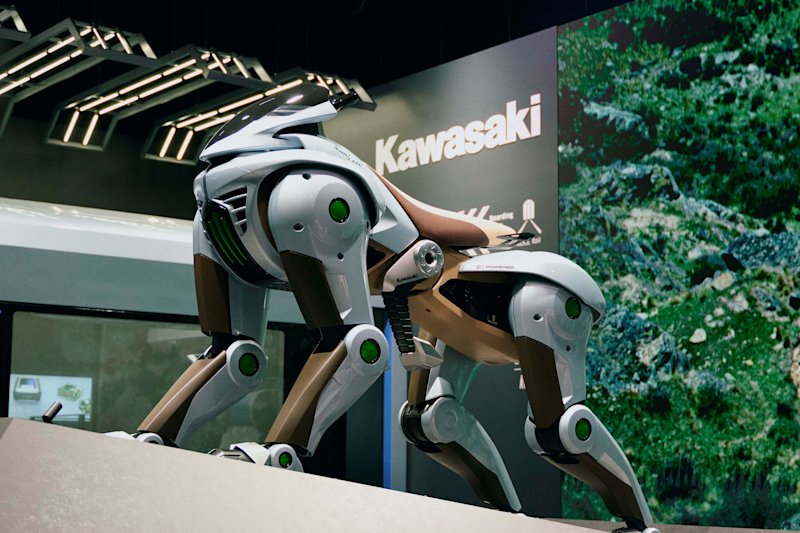

After deciding to go with four legs, we then. looked at the design in terms of speed capacity and reviewed a number of suggestions. One was to try and achieve the world’s fastest performance, a record we set for the motorcycle, using the world’s fastest land animal, the cheetah, as a model. Rather than the cheetah, however, we eventually settled on the lion as a performance model, determining that it was better suited to allowing the rider to maintain postural balance as well as also evoking the image of barreling across the landscape astride the king of the jungle.
What could be controversial is the misleading impression created by the vehicle’s appearance. Due to its structure of four legs supporting a body, the thing inevitably looks like an autonomous robot, which it is not. Rather, CORLEO is a means of mobility and is distinctively characterized by its function of enabling the rider to derive enjoyment from actively engaging in its maneuvering. We redesigned the styling repeatedly to make it look more like a piece of transportation equipment.
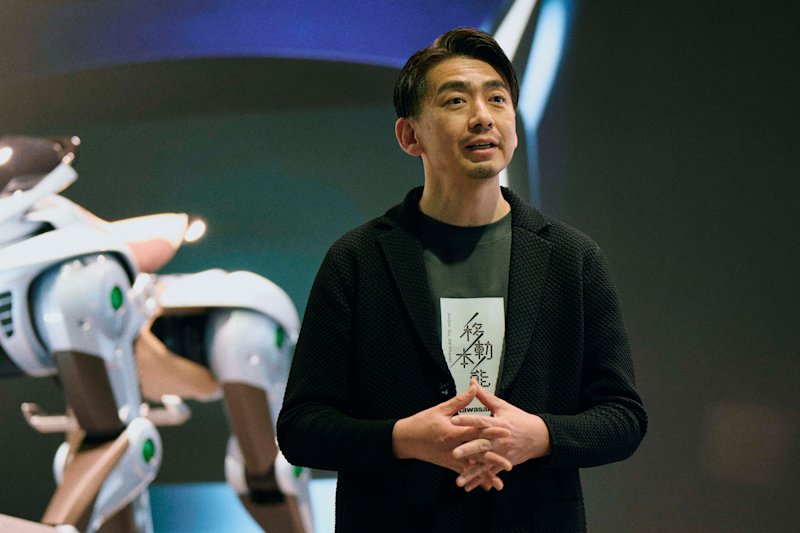

CORLEO is also unconventional in terms of the maneuvering system. By design, the vehicle is maneuvered by the rider shifting their weight, so controls like accelerator and steering grips have been omitted. Instead, it is equipped with a handhold and stirrup-like structures. This system thus represents a uniquely innovative design concept that combines functions of the motorcycle with those of horse riding, for which we have filed multiple patent applications.
To determine the riding position, we conducted an experimental survey with cooperation received from the equestrian club of Kobe University. Survey participants rode the full-size mock-up and reported their feelings about the experience. Furthermore, we adopted a sort of swing arm mechanism that is similar to the standard function on a motorcycle in order to allow the rider to enjoy a broad range of motion and maintain a stable riding posture.

The name CORLEO is coined from the words “Cor Leonis,” another name for Regulus―the star Alpha Leonis― , which is a name associated with the lion, the key inspiration for the design of the form. It is thus also suggestive of the ancient practice of travelers using stars as a guide to find their way, and reflects the team’s shared sense of commitment to creating mobility solutions for fulfilling the human impulse to move.
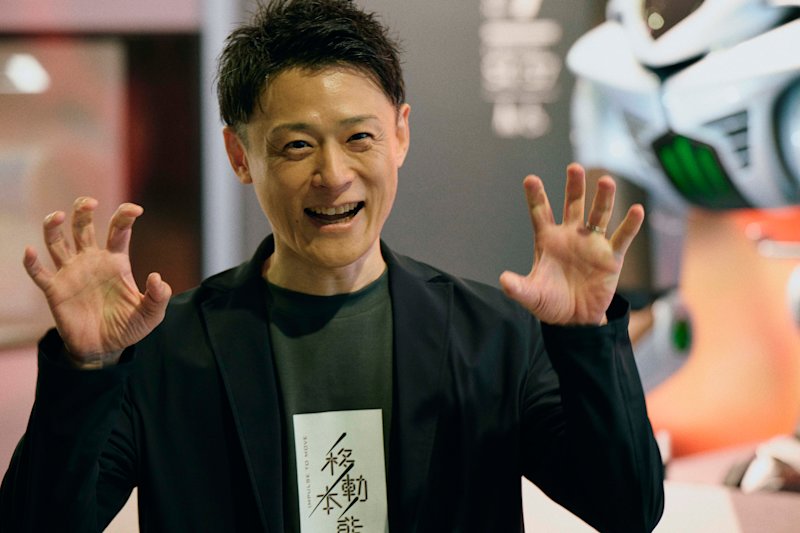
Aiming to create more passenger-friendly and stress-free systems of mass transportation
The ALICE SYSTEM (Concept 02) is our second answer to the theme of fulfilling the “Impulse to Move.” This is a futuristic mass transportation service model featuring independent passenger cabins able to dock with different means of transportation, including trains, ships and airplanes, and to be carried along by them. This interconnected mobility system eliminates the need for passengers to transfer, thereby removing the personal stress associated with the process.
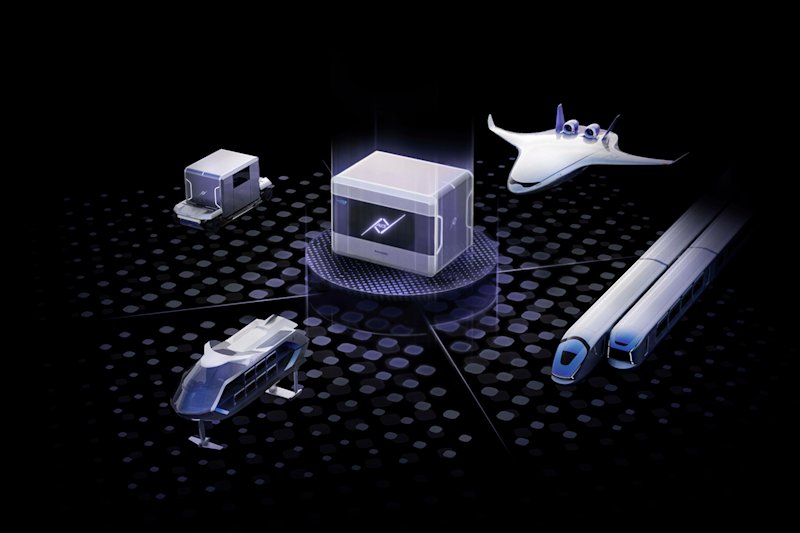

We began by looking into issues associated with ongoing mass transportation service systems with the objective of identifying factors that inhibit the impulse to move. Major issues identified as likely to occur were related to stressful situations like changing trains during rush hour or with bulky luggage or strollers and mobility-impaired passengers taking long-distance trips involving a transfer, as well as difficulties with arranging work schedules to take leave for multi-day travel.
The ALICE SYSTEM is designed to resolve all these issues in a single stroke. Our plan is to create mass transportation systems that eliminate the need to engage in stressful transfers and to provide a stress-free, comfortable passenger experience with the aim of enabling people to fulfill their impulse to move, no matter what their personal attributes or background. We are proud of this outstanding concept, which has only been made possible by capitalizing on the expertise Kawasaki has developed while engaging in the three mobility sectors of land, sea and air and is the result of a comprehensive examination of practicability.
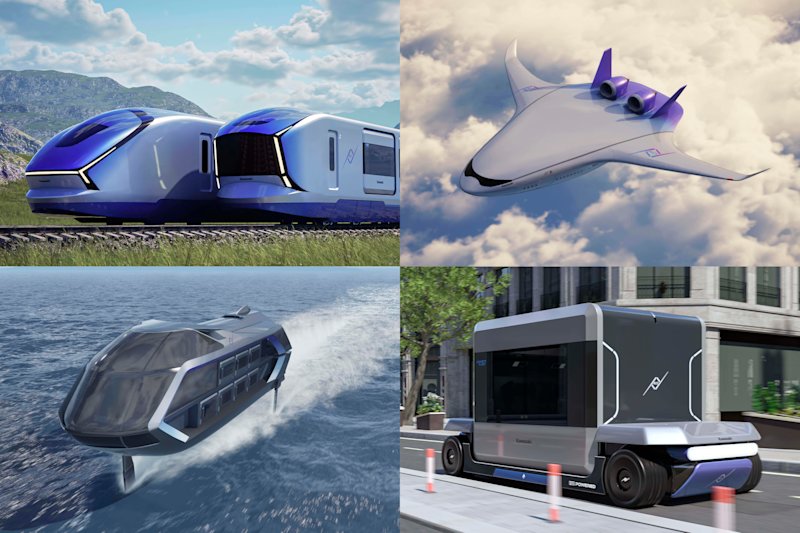
ALICE is an acronym for “Accessible Linkages for Innovative and Comfortable Experiences,” an expression of our thinking about a mass transportation system that is universally friendly and able to give passengers an experience that is both thrilling and fun.
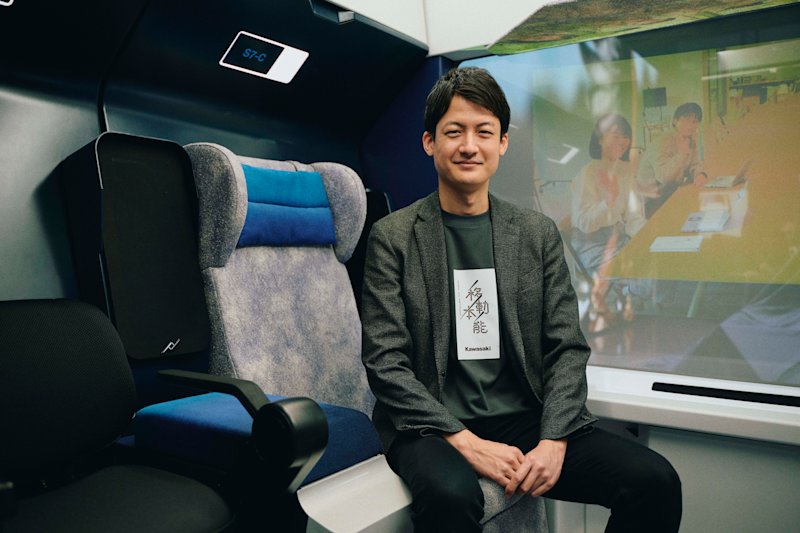

One of the key characteristics of the ALICE SYSTEM lies in its ability to support the overall travel experience. The system recommends appropriate plans in response to user requests, such as wanting to go on a boat trip or explore scenic routes by rail. This can also provide users with a bit of a push, particularly the less-experienced travelers.
Seats in the passenger cabin are equipped with robotic concierge programs developed by applying industrial robot technologies to provide finely tuned customer service. The robot concierge can prepare drinks and offer other forms of hospitality. Network connection and videotelephony are also a standard feature to provide a comfortable environment to passengers who need to work remotely.
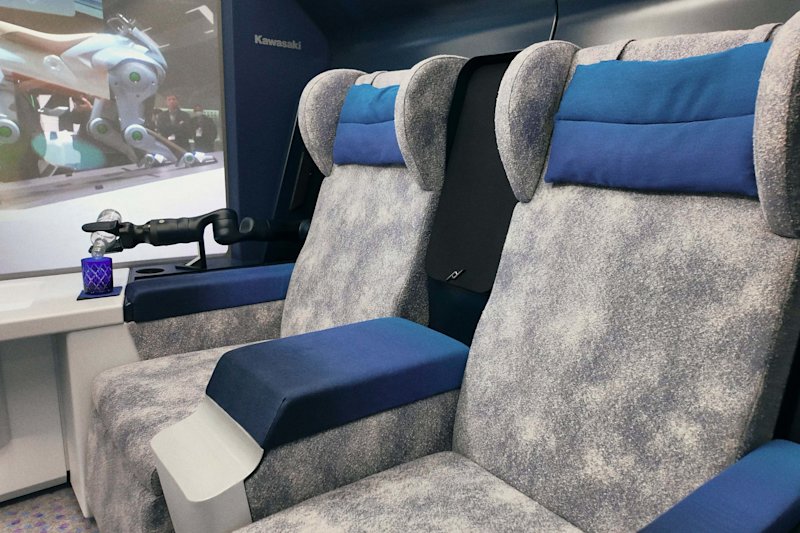
Possibility of hydrogen technology to support future mobility systems
CORLEO and the ALICE SYSTEM are both powered by hydrogen. For this purpose, Kawasaki has adopted its hydrogen power generators, an embodiment of its vision for a hydrogen-based future society.

For power supply, we have employed our hydrogen power generator O’CUVOID, which can be refueled by simply replacing the hydrogen tank. In the ALICE SYSTEM, the power supply system has been designed to have O’CUVOID connected to multiple units to be able to augment power output while also allowing each unit to be removed in case of a problem to enable easy maintainability.
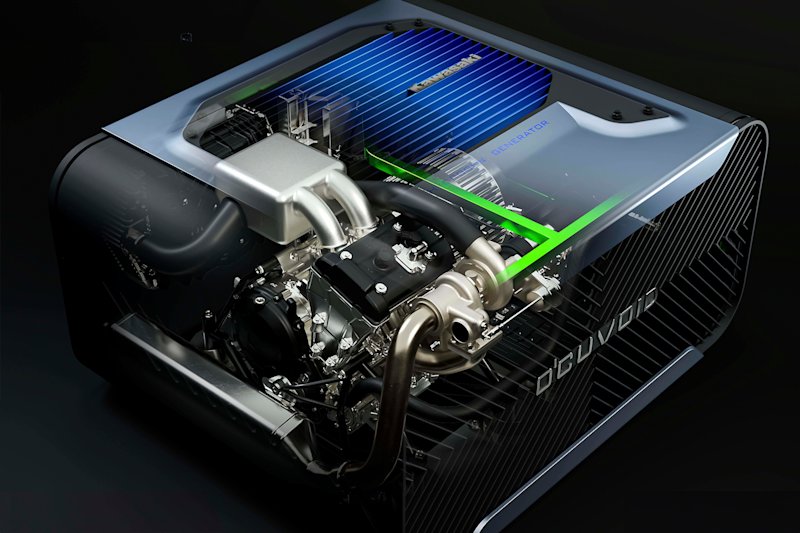

Kawasaki’s Group Vision 2030 describes the vision the Group is aiming to realize in 2030, with a focus on the three fields of “A Safe and Secure Remotely-Connected Society,” “Near-Future Mobility” and “Energy and Environmental Solutions.” The key technology for each field is related to robotics for remote control; mobility for enriched lifestyles; and hydrogen as a highly anticipated clean energy source.
For Expo 2025, the target year of the envisioned future society is set as 2050, which is 20 years ahead of that set in the Group Vision. By that time, we anticipate that hydrogen-powered robotic and mobility functions will be an essential part of public infrastructure, so we have decided to express the theme of fulfilling the “Impulse to Move” by leveraging the unique strengths of Kawasaki in implementing technology in the three fields of robotics, mobility and hydrogen.
Unleash your “Impulse to Move” at Expo 2025!
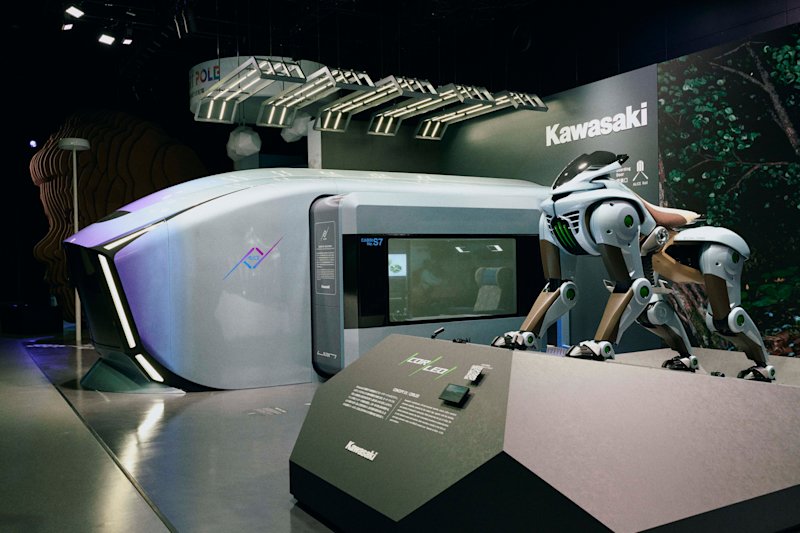
Kawasaki’s exhibition space is designed to evoke the image of the laboratory of a scientific genius, in line with the name “Impulse to Move Lab: Kawasaki Future World.” The exhibition will be presented in both physical and virtual settings, offering visitors opportunities to see CORLEO and the ALICE SYSTEM using full-size mock-ups in the physical venue (in Yumeshima, Osaka) and experience each of them through avatar images in the virtual space.
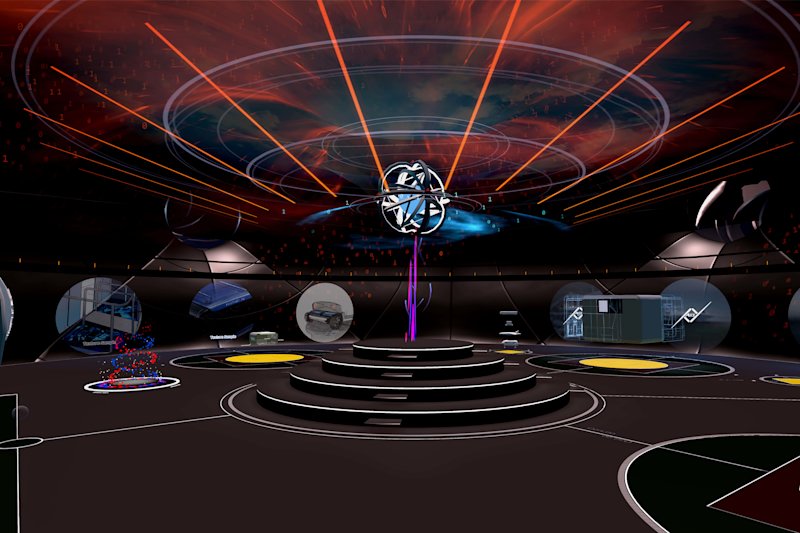

One of the most important policies of our showcase is to use life-size displays. CORLEO as well as ALICE Rail and the ALICE Cabin will appear in full-scale dimensions to produce a sense of reality. As one of the up-close experience opportunities offered in our exhibition, visitors can look right inside a cabin docked to a train car.
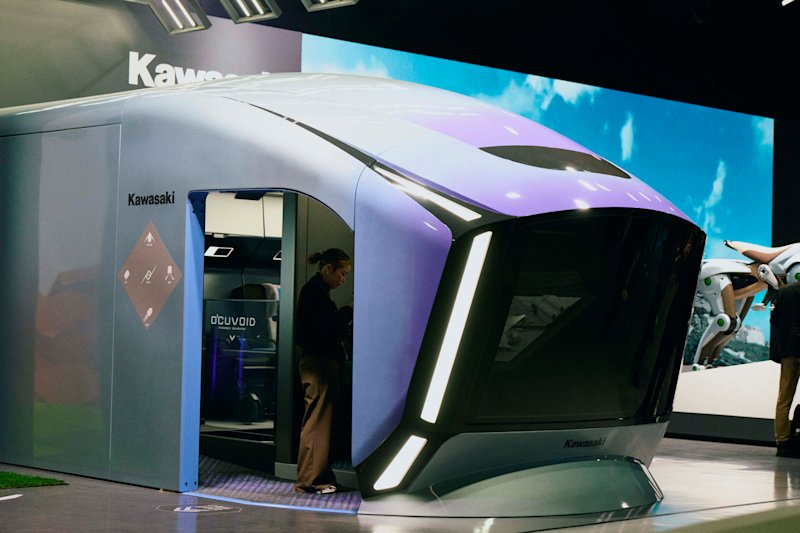

Moreover, we have prepared a set of downloadable “Impulse to Move” logos, which are available for free from the dedicated site. We hope that lots of people will download whichever image they like and customize it by itself or by combining with other images and thus have a positive experience with our “Impulse to Move” project even if they don’t attend the Expo 2025 venue. We believe CORLEO and the ALICE SYSTEM, two distinctive creations that only Kawasaki could produce, will leave their mark on the history of the world exposition movement. We invite you all to visit our exhibition and check out our offerings first hand.
Special site “Impulse to Move.”
https://www.khi.co.jp/expo2025/en
Professional Trail Runner Ruy Ueda Bewitched by CORLEO
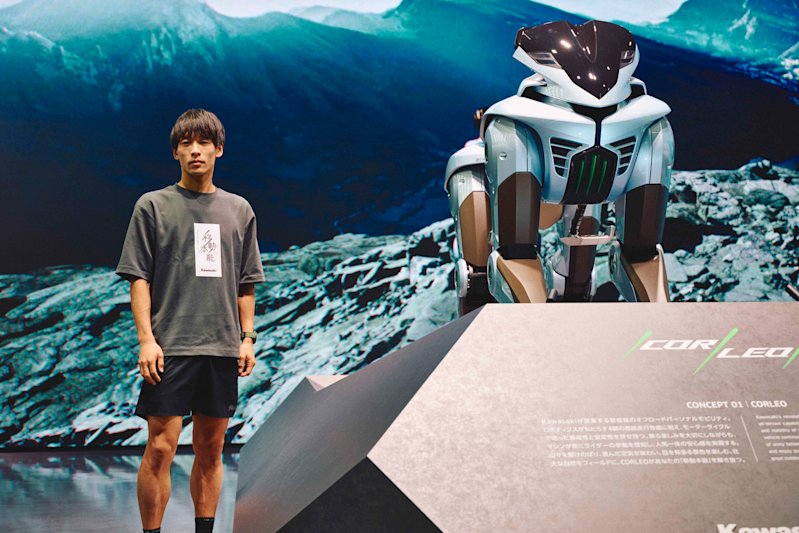
On April 3, Kawasaki invited the press to attend a full-scale preview of its Expo 2025 exhibits at its booth in Yumeshima. The session featured professional trail runner Ruy Ueda, spokesmodel for CORLEO, who spoke about the allure of the futuristic vehicle.
Ruy Ueda
Professional trail runner
Born in Omachi City, Nagano on October 3, 1993. Ueda is Japan’s best-known trail runner and he has also come under the international spotlight thanks to an array of brilliant performances, including the following: being the youngest runner to set the record for the Hasegawa Tsuneo Cup (Hasetsune Cup) Japan Mountain Endurance Race, breaking the earlier record by 18 minutes (2014); winning the Youth Skyrunning World Championships U23 and taking second place in the UTMB World Series Finals (CCC), known as the world’s most competitive trail ultramarathon race (2016); becoming the first Asian athlete to be named best runner of the year in the Skyrunner World Series (2019); winning two events at the Skyrunning World Championships (2021); setting a new Guinness World Record in the “Mt. Fuji One Stroke” challenge (2022); and winning the 17th Hasetsune 30K in a meet record (March 2025).
CORLEO—a special partner for experiencing the thrill of trail riding in the mountains
A passion for exploring places I have never been to before on foot has been the longstanding motivation for my trail running. So when I heard about Kawasaki’s exhibition theme of fulfilling the “impulse to move,” it naturally struck a chord with me.
CORLEO is quite handsome to look at, in keeping with the image of the lion, the king of the jungle. The sleek body gives it a relatively soft look while the four sturdy legs help create the appearance of strength and reliability. I’m interested in running against CORLEO in a race as a way to test my thigh muscle strength.
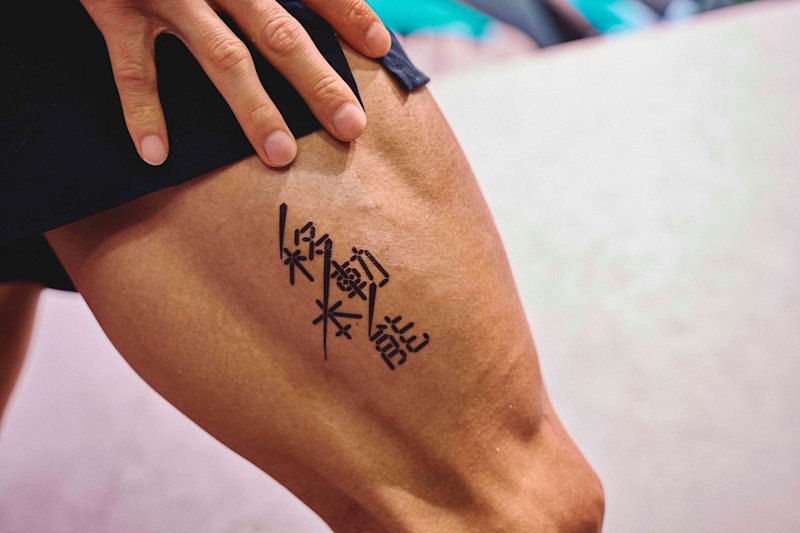
CORLEO is still a concept model, but it is designed to accommodate two riders, envisioned specifically as a parent and child. This would be helpful for me, as I occasionally go to the mountains with my daughter on my back. With CORLEO, we could enjoy spending time together in the mountains in a safer manner. The vehicle would also be useful for getting to my training ground because its strong off-road capability would allow me to reduce my travel time.
My customization requests, if possible, would be to select colors to match the design of my running gear and fitting a child seat to make it safer for my daughter.
Among the many special features offered by the machine, what I appreciate most is that it’s hydrogen powered. As an outdoors athlete who engages with nature as well as someone who believes in preserving our beautiful natural landscape for future generations, I place a lot of importance on using energy sources that are friendly to the environment.
Given the recent context in which various mountain sports are encountering difficulties brought about by global warming, I have high expectations for Kawasaki’s hydrogen technology. My “impulse to move” is closely associated with a desire to encounter nature in all its beauty, and it is a key driver of the perseverance I need to continue with my rigorous training.
At present, I’m concentrating on the aim of setting a new record for the Fuji Mountain Race, an annual event held in July that famously hasn’t had its record broken for 14 years. This is one of my most important goals for 2025. I’m working hard in order to be named the best trail runner while also being true to the role of spokesmodel for CORLEO. I hope to have the support and encouragement of many people.
